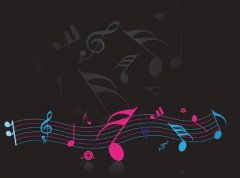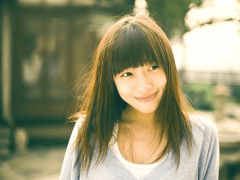求人教版六年级英语复习重点
1学习用品(school things)
pen钢笔 pencil铅笔 pencil case铅笔盒 rule尺子 book书 bag包 comic book漫画书post card 明信
片newspaper报纸 schoolbag书包 eraser橡皮 crayon蜡笔 sharpener卷笔刀 story book故事书 notebook笔记本
Chinese book语文书 English book英语书 math book数学书 magazine杂志 dictionary词典
2人体(body)
foot脚 head头 face脸 hair头发 nose鼻子 mouth嘴 eye眼睛 ear耳朵
arm手臂 hand手 finger手指 leg腿
3颜色(colours)
red红 blue蓝 yellow黄 green绿 white白 black黑 pink粉红 purple紫 orange橙 brown棕
4动物(animals)
cat猫 dog狗 pig猪 duck鸭 rabbit兔 horse马 elephant大象 ant蚂蚁
fish鱼 bird鸟 eagle鹰 beaver海狸 snake蛇 mouse老鼠 squirrel松鼠 kangaroo袋鼠 monkey猴 panda熊猫
bear熊 lion狮子 tiger老虎 fox狐狸 zebra斑马 deer鹿 giraffe长颈鹿 goose鹅 hen母鸡 turkey火鸡 lamb小羊
sheep绵羊 goat山羊 cow奶牛 donkey驴 squid鱿鱼 lobster龙虾 shark鲨鱼 seal海豹 sperm whale抹香鲸
killer whale虎鲸
5人物(people)
friend朋友 boy男孩 girl女孩 mother母亲 father父亲 sister姐妹 brother兄弟 uncle叔叔;舅舅 man男人
woman女人 Mr.先生 Miss.小姐 lady女士;小姐 mom妈妈 dad爸爸 parents父母grandma/grandmother(外)祖母
grandpa/grandfather(外)祖父 aunt姑姑;舅母cousin堂(表)兄弟;堂(表)姐妹 son儿子 daughter女儿 baby
婴儿 kid小孩 classmate同学 queen女王
visitor参观者 neighbour邻居 principal校长 pen pal笔友 tourist旅行者
people人物 robot机器人
6职业(jobs)
teacher教师 student学生 doctor医生 nurse护士 driver司机 farmer农民
singer歌唱家writer作家 actor男演员 actress女演员 artist画家 TV reporter电视台记者 engineer工程师
accountant会计 policeman(男)警察 salesperson销售员 cleaner清洁工 baseball player棒球运动员 assistant售货
员
7食品 饮料(food & drink)
rice米饭 bread面包 beef牛肉 milk牛奶 water水 egg蛋 fish鱼 tofu豆腐 cake蛋糕hot dog热狗 hamburger汉
堡包 French fries炸薯条 cookie曲奇饼 biscuit饼干 jam果酱noodles面条 meat肉 chicken鸡肉 pork猪肉 mutton
羊肉 vegetable蔬菜 salad沙拉 soup汤 ice冰 ice-cream冰淇淋 Coke可乐 juice果汁 tea茶 coffee咖啡
breakfast早餐lunch午餐 supper晚餐 dinner正餐
8水果 蔬菜(fruit & vegetables)
apple苹果 banana香蕉 pear梨 orange橙 watermelon西瓜 grape葡萄
eggplant茄子green beans青豆 tomato西红柿 potato土豆 peach桃
strawberry草莓 cucumber黄瓜 onion洋葱 carrot胡萝卜 cabbage卷心菜
9衣服(clothes)
jacket夹克衫 shirt衬衫 T-shirtT恤衫 skirt短裙子 dress连衣裙 jeans牛仔裤 pants长裤 socks袜子 shoes
鞋子 sweater毛衣 coat上衣 raincoat雨衣
shorts短裤 sneakers运动鞋 slippers拖鞋 sandals凉鞋 boots靴子
hat(有沿的)帽子 cap便帽 tie领带 scarf围巾 gloves手套
10交通工具(vehicles)
bike自行车 bus公共汽车 train火车 boat小船 ship轮船 yacht快艇 car小汽车 taxi出租车 jeep吉普车 van小
货车;面 包车 plane飞机 subway地铁
motorcycle摩托车
11杂物(other things)
window窗户 door门 desk课桌 chair椅子 bed床 computer计算机 board木板
fan风扇 light灯 teacher's desk讲台 picture图画;照片 wall墙壁 floor地板
curtain窗帘 trash can垃圾箱 closet壁橱 mirror镜子 football足球 present礼物 walkman随身听 lamp台灯 phone电话
sofa沙发 shelf书架 fridge冰箱 table桌子
TV电视 air-conditioner空调 key钥匙 lock锁 photo照片 chart图表 plate盘子
knife刀 fork叉 spoon勺子 chopsticks筷子 pot锅 gift礼物 toy玩具doll洋娃娃
ball球 balloon气球 kite风筝 jigsaw puzzle拼图游戏 box盒子 umbrella伞
zipper拉链 violin小提琴 yo-yo溜溜球 nest鸟窝 hole洞 tube管子 toothbrush牙刷 menu菜单 e-card电子卡片 e-mail
电子邮件 traffic light交通灯 money钱 medicine药 sunglasses太阳镜
12地点(locations)
home家 room房间 bedroom卧室 bathroom卫生间 living room起居定 kitchen厨房 classroom教室
school学校 park 公园 library图书馆 post office邮局 hospital医院 cinema电影院 bookstore书店 farm农场
zoo动物园 garden花园 study书房 playground操场 canteen食堂
teacher's office教师办公室 gym体育馆 washroom卫生间 art room绘画教室 computer room计算机教室 music
room音乐教室 TV room电视机房 flat 公寓 company公司 factory 工厂 fruit stand水果摊 pet shop 宠物
商店
nature park 自然公园 theme park主题公园 science museum科学博物馆 the Great Wall长城
supermarket 超市 bank银行 country国家
village乡村 city城市
13课程(courses)
sports体育运动 science科学 Moral Education思想品德课 Social Studies社会课
14国家 城市 (countries cities)
China/PRC中国 America/USA美国 UK联合王国 England英国 Canada加拿大 Australia澳大利亚 New York纽约 London伦敦
Sydney悉尼 Moscow莫斯科
Cairo开罗
15气象
cold寒冷的 warm温暖的 cool凉爽的 snowy下雪的 sunny晴朗的 hot火热的 rainy下雨的 windy有风的 cloudy多云的
weather report天气预报
16景物(nature)
river河流 lake湖泊 stream河;溪 forest森林 path小道 road公路 house房子
bridge桥 building建筑物 rain雨 cloud云 sun太阳 mountain山 sky天空
rainbow彩虹 wind风 air空气
17植物(plants)
flower花 grass 草 tree 树 seed种子 sprout苗 rose 玫瑰 leaf 叶子
18星期(week)
Monday 星期一 Tuesday 星期二 Wednesday 星期三 Thursday 星期四 Friday
星期五Saturday星期六 Sunday 星期日 weekend周末
19月份(months)
Jan.(January) 一月 Feb.(February)二月 Mar.(March) 三月 Apr.(April) 四月
May 五月 Jun.(June)六月 Jul.(July) 七月Aug.(August) 八月Sept.(September) 九月 Oct.(October)十月 Nov.
(November) 十一月 Dec.(December)十二月
20季节(seasons)
spring 春 summer夏 fall (美)autumn(英)秋 winter冬天
21方位(directions)
south南 north北 east 东 west西 left 左 right 右
22患病(illness)
have a fever 发烧 hurt 疼痛 have a cold 感冒 have a toothache 牙疼
have a headache 头疼 have a sore throat喉咙疼
23数词(numbers)
one一 two二 three三 four 四 five五 six 六 seven七 eight八 nine九 ten十 eleven十一 twelve十二
thirteen十三 fourteen 十四 fifteen十五
sixteen十六 seventeen十七 eighteen 十八 nineteen十九 twenty 二十 thirty三十 forty四十 fifty五十 sixty六
十 seventy七十 eighty八十 ninety九十
hundred 百 first 第一 second第二 third第三 fourth第四 fifth第五 eighth第八 ninth 第九 twelfth第十二
twentieth第二十
24形容词(adj.)
big大的 small小的 long长的 tall高的 short短的;矮的 young年轻的
old旧的;老的 strong健壮的 thin瘦的 active积极的;活跃的 quiet安静的
nice好看的 kind和蔼可亲的 strict严格的 smart聪明的 funny滑稽可笑的
tasty好吃的 sweet甜的 salty咸的 sour酸的 fresh新鲜的 favourite最喜爱的
clean干净的 tired疲劳的 excited兴奋的 angry生气的 happy高兴的 bored无聊的
sad忧愁的 taller更高的 shorter 更矮的 stronger 更强壮的 older年龄更大的 younger更年轻的 bigger 更大的
heavier更重的 longer更长的 thinner 更瘦的 smaller更小的 good好的 fine 好的 great 很好的 heavy 重的 new 新的
fat 胖的right 对的 hungry 饥饿的 cute逗人喜爱的 little 小的 lovely 可爱的
beautiful 漂亮的 colourful 色彩鲜艳的 pretty 漂亮的 cheap便宜的
expensive昂贵的 juicy 多汁的 tender 嫩的healthy 健康的 ill 有病的
helpful 有帮助的 high 高的 easy 简单的 proud骄傲的 sick有病的 better 更好的 higher 更高的
25介词(prep.)
in在......里 on在........上;在.......时候 under在........下面 near在......的附近 behind在.......后
边 next to 与......相邻 over在.......上面 in front of 在.......前面 beside在.......的旁边
26代词(pron.)
I 我 we 我们 you你;你们 he 他 she她 it它 they他(她,它)们 my我的
our我们的 your你的;你们的 his他的 her她的 its它的 their他(她,它)们的
27动词(V.)
play玩;踢 swim游泳 skate滑冰 fly飞 jump跳 walk走
run跑 climb爬 fight 打架 swing荡 eat吃 sleep 睡觉
like像;喜欢 have 有;吃 turn 转弯 buy 买 take 买;带 live居住 teach教
go去 study 学习 learn 学习
sing 唱歌 dance 跳舞 row 划 do homework 做作业
watch TV 看电视 read books 读书 cook dinner/ the meals 做饭 water the flowers 浇花
sweep the floor扫地 clean the bedroom/room打扫卧室/房间 make the bed 铺床 set the table 摆饭桌
wash the clothes 洗衣服
do the dishes洗碗碟 use a computer 使用计算机 do morning exercise 晨练; eat/have breakfast
吃早饭 eat/have dinner 吃晚饭 go to school 上学 have English class 上英语课 play
sports 进行体育活动 get up 起床 climb mountains 爬山 go shopping 买东西 play the piano 弹
钢琴 visit grandparents 看望(外)祖父母 go hiking 去远足 fly kites 放风筝 make a snowman 堆雪人
plant trees 种树 draw pictures 画画
answer the phone 接电话 listen to music 听音乐 write a letter写信
write an e-mail 写电子邮件 drink water 喝水 take pictures 照相
watch insects观察昆虫 pick up leaves 采摘树叶
do an experiment 做实验 catch butterflies 捉蝴蝶 count insects 数昆虫 collect insect
收集昆虫 collect leaves 收集树叶 write a report 写报告 play chess 下棋 have a picnic 举行野餐
get to 到达 ride a bike 骑自行车 play the violin 拉小提琴 make kites 制作风筝 collect stamps 收
集邮票
meet 见面 welcome 欢迎 thank 谢谢 love爱 work 工作 drink 喝 taste 尝 smell 闻
feed 喂养 shear 剪 milk 挤奶 look 看 guess 猜 help 帮助 pass 传递 show 展示 use
使用 clean打扫 open 打开 close 关上 put 放 read 读 write 写 paint 绘画 tell 告诉 kick 踢
bounce 反弹 ride 骑 stop停 wait 等 find 寻找 drive 驾驶 fold 折 send 寄 wash 洗
shine 照耀 become 变成 feel 感觉到think 思考meet 遇见fall 落下leave 离开 wake up 醒来put on 穿上
take off 脱掉 hang up 挂起 wear 穿go home 回家 go to bed 上床睡觉
play computer games 玩电脑游戏 play chess 下棋 do housework 做家务 empty the trash 倒垃圾 put
away the clothes 收拾衣服 get off 下车
take a trip 去旅行 read a magazine 阅读杂志 go to the cinema 去看电影
(二)句型专项归类汇总
1、 肯定句:是指用肯定的语气来陈述的句子,
如:I’m a student. She is a doctor. He works in a hospital.
There are four fans in our classroom. He will eat lunch at 12:00.
I watched TV yesterday evening.
2、否定句:含有否定词或表示否定意义词的句子,如:I’m not a student.
She is not (isn’t) a doctor.
He does not (doesn’t) work in a hospital.
There are not (aren’t) four fans in our classroom.
He will not (won’t) eat lunch at 12:00.
I did not (didn’t) watch TV yesterday evening.
☆注意☆ 小结:否定句主要是在肯定句的基础上加上了否定词 “not”。有动词be的句子则“not”加在be后面,可缩写
成“isn’t,aren’t”,但am not 一般都分开写。没有动词be的句子则要先在主要动词的前面加上一个助动词(do,does,
did),然后在它后面加上“not”,你也可以把它们缩写在一起如“don’t , doesn’t , didn’t )。这三个助动词要根据
人称和时态来选择,其中“does”只用于一般现在时主语是第三人称单数的情况,而“did”只用于一般过去时,不论主语是什
么人称和数,都用“did” 。
六年级英语复习资料
一. 词汇
⑴ 单词
1. 介词:in, on, under, behind, near, at, of
1). in表示"在……中", "在……内"。例如:
in our class 在我们班上
in my bag 在我的书包里
in the desk 在桌子里
in the classroom 在教室里
2). on 表示"在……上"。例如:
on the wall 在墙上
on the desk 在桌子上
on the blackboard 在黑板上
3). under表示"在……下"。例如:
under the tree 在树下
under the chair 在椅子下
under the bed 在床下
4). behind表示"在……后面"。例如:
behind the door 在门后
behind the tree 在树后
5). near表示"在……附近"。例如:
near the teacher's desk 在讲桌附近
near the bed 在床附近
6). at表示"在……处"。例如:
at school 在学校
at home 在家
at the door 在门口
7). of 表示"……的"。例如:
a picture of our classroom 我们教室的一幅画
a map of China 一张中国地图
2. 冠词 a / an / the:
冠词一般位于所限定的名词前,用来署名名词所指的人或事物。冠词有不定冠词和定冠词两种。不定冠词有两个形式,即a和an。a用在以辅音音素开头的词前,如a book; an用在以元音音素开头的字母前,如an apple.
a或an与可数名词单数连用,泛指某类人或某物中的一个。
This is a cat.
这是一只猫。
It's an English book.
这是一本英语书。
His father is a worker.
他的爸爸是个工人。
the既可以用在可数名词前,也可以用在不可数名词前,表示某个或某些特定的人或事物,也可以指上文提到过的人或事物。
Who's the boy in the hat?
戴帽子的男孩是谁呀?
------ What can you see in the classroom?
------ I can see a bag.
------ Where's the bag?
------ It's on the desk.
------- 你能在教室里看到什么呀?
------ 我能看见一个书包。
------ 书包在哪呀?
------ 在桌子上。
3.some和any
①在肯定句中用some.例如:
There are some books on the desk.桌子上有一些书。
Lucy has some good books露西有一些好书。
②在疑问句和否定句中用any。例如:
Is there any ink in your pen?你的钢笔里有墨水吗?
Do you have any brothers and sisters?你有兄弟姐妹吗?
There isn't any water in the glass.杯子里没有水。
⑵记住它们的特殊用法。
①some亦可用于表示盼望得到对方肯定的答复或表示建议、委婉请求的疑问句中,这一点我们不久就会学到。例如:
Would you like to have some apples?你想吃苹果吗?
②any也可用于肯定句中,表示"任何的"。例如:
Any one of us can do this.我们当中任何一个都能做这个。
some 和any的用法是经常出现的考点,希望大家能准确地掌握它们的用法。
4.family
family看作为一个整体时,意思是"家庭",后面的谓语动词be用单数形式 is ;如把family看作为家庭成员时,应理解为复数,后面的谓语动词be应用are。
My family is a big family. 我的家庭是个大家庭。
My family are all at home now. 我的家人现在都在家。
Family强调由家人组成的一个集体或强调这个集体中的成员。home指个人出生、被抚养长大的环境和居住地点。 house指"家"、"房屋",侧重居住的建筑本身。
His family are all workers. 他的家人都是工人。
My home is in Beijing. 我的家在北京。
He isn't at home now. 他现在不在家。
It's a picture of my family. 这是一张我全家的照片。
5. little的用法
a little dog 一只小狗,a little boy 一个小男孩。little常用来修饰有生命的名词。
*但little还可表示否定意义,意为"少的",加不可数名词。
There is little time. 几乎没时间了。
There is little water in the cup. 杯中水很少。
⑵ 词组
on the desk 在桌子上
behind the chair 在椅子后
under the chair 在椅子下面
in her pencil-box 在她的铅笔盒中
near the door 在门附近
a picture of a classroom 一个教室的图片
look at the picture 看这张图片
the teacher's desk 讲桌
a map of China 一张中国地图
family tree 家谱
have a seat 坐下,就坐
this way 这边走
二. 日常用语
1. Come and meet my family.
2. Go and see. I think it's Li Lei.
3. Glad to meet you.
4. What can you see in the picture?
I can see a clock / some books.
5. Can you see an orange?
Yes, I can. / No, I can't.
6. Where's Shenzhen?
It's near Hong Kong.
7. Let me see.(口语)让我想想看。
see 在这是"明白、懂了",不可译作"看见"。例如:
8. Please have a seat.
seat表示"座位",是个名词。have a seat表示"就坐",也可以说take a seat, 和sit down的意思相同。
三. 语法
1. 名词所有格
名词如要表示与后面名词的所有关系,通常用名词所有格的形式,意为"……的"。一般有以下几种形式:
(1). 一般情况下在词尾加"'s"。例如:
Kate's father Kate的爸爸
my mother's friend 我妈妈的朋友
(2). 如果复数名词以s结尾,只加"'"。例如:
Teachers' Day 教师节
The boys' game 男孩们的游戏
(3). 如果复数名词不以s结尾,仍加"'s"。例如:
Children's Day 儿童节
Women's Day 妇女节
(4). 表示两个或几个共有时,所有格应加在后一个名词上。例如:
Lucy and Lily's room Lucy 和Lily的房间
Kate and Jim's father Kate 和Jim的爸爸
动物和无生命事物的名词的所有格一般不在词尾加"'s",而常常用介词of的短语来表示。
a map of China 一幅中国地图
the name of her cat 她的猫的名字
a picture of my family 我的家庭的一张照片
the door of the bedroom 卧室的门
2. 祈使句
祈使句主要用来表示说话人的请求、命令、建议、叮嘱等意图。祈使句一般不用主语,读时用降调。为使语气委婉、礼貌,常在句首或句尾加please 。在句尾时,please前多用逗号。
(1). 祈使句肯定形式的谓语动词一律用动词原形。
Go and see. 去看看。
Come in, please. 请进。
(2). 祈使句的否定形式常用don't于句首。
Don't look at your books. 不要看书。
Don't play on the road. 不要在马路上玩。
3. There be 的句子结构
There be是一个"存在"句型,表示"有"的意思,
肯定句的形式为:There be + 名词(单数或复数)+地点状语或时间状语。
be动词单复数的确定,看be后边第一个名词,当所接主语为单数或不可数名词时,be动词形式为is;当所接主语为复数名词时,be动词为are;当be动词后接两个以上主语时,be动词与最临近主语保持数上的一致。意思为"某地有某人或某物"。如:
There is an eraser and two pens on the desk. 桌子上有一块橡皮和两支钢笔。
There are two pens and an eraser on the desk. 桌上有两支钢笔和一块橡皮。
(1)there be的否定句,即在be的后面加上not。
否定形式为:There be + not + (any) + 名词+地点状语。
There is not any cat in the room. 房间里没猫。
There aren't any books on the desk. 桌子上没书。
(2)there be句型的疑问句就是将be提到句首:Be there + (any) +名词+地点状语?肯定回答:Yes, there is / are. 否定回答:No, there isn't / aren't.
---Is there a dog in the picture? 画上有一只狗吗?
---Yes, there is. 有。
---Are there any boats in the river? 河里有船吗?
---No, there aren't. 没有。
(3)特殊疑问句:How many . . . are there (+地点状语)?"某地有多少人或物?"回答用There be . . .
There's one. / There are two / three / some . . .
有时直接就用数字来回答。One. / Two . . .
---How many students are there in the classroom? 教室里有多少学生?
---There's only one. / There are nine. 只有一个。/有九个。
(4)如果名词是不可数名词,用:How much + 不可数名词 + is there + 地点状语?
How much water is there in the cup? 杯中有多少水?
How much food is there in the bowl? 碗里有多少食物?




